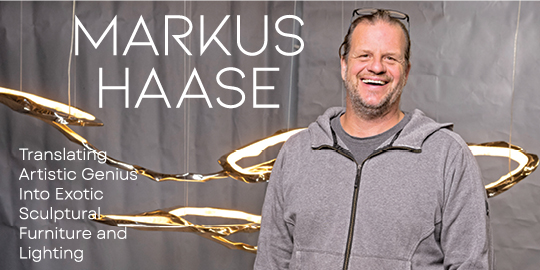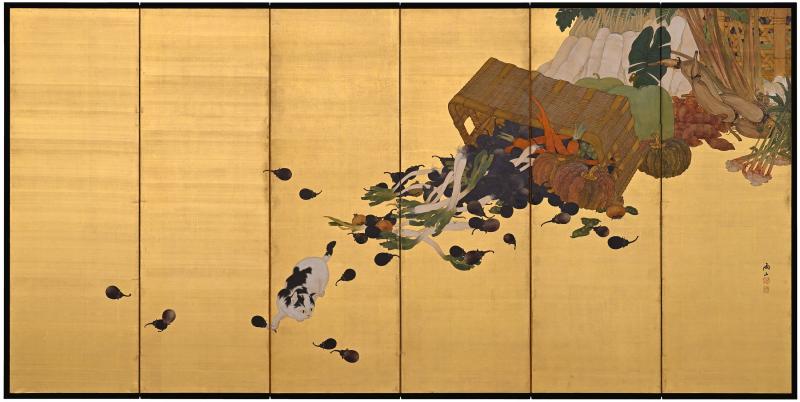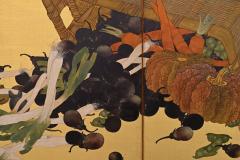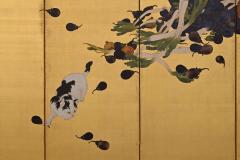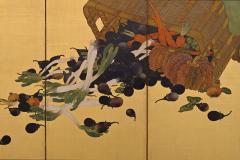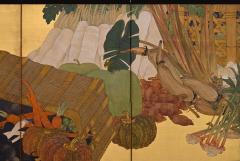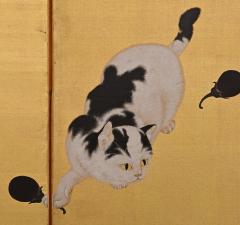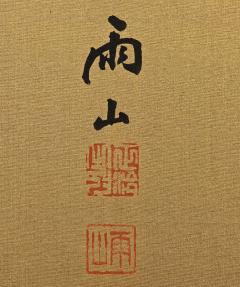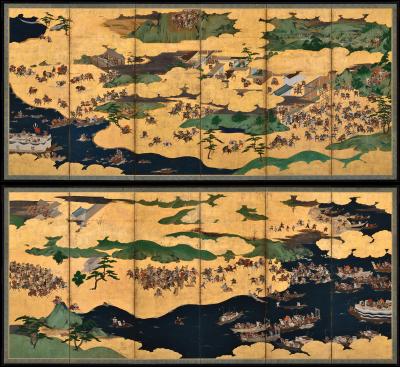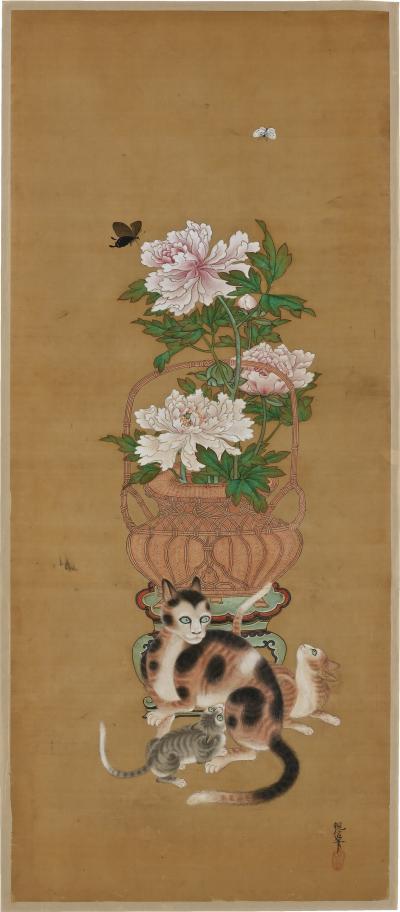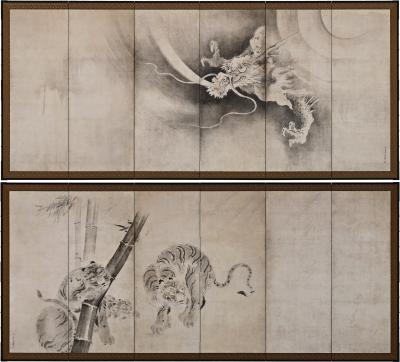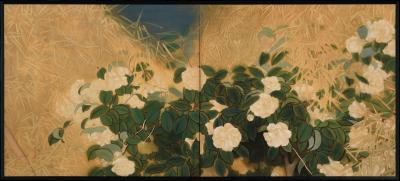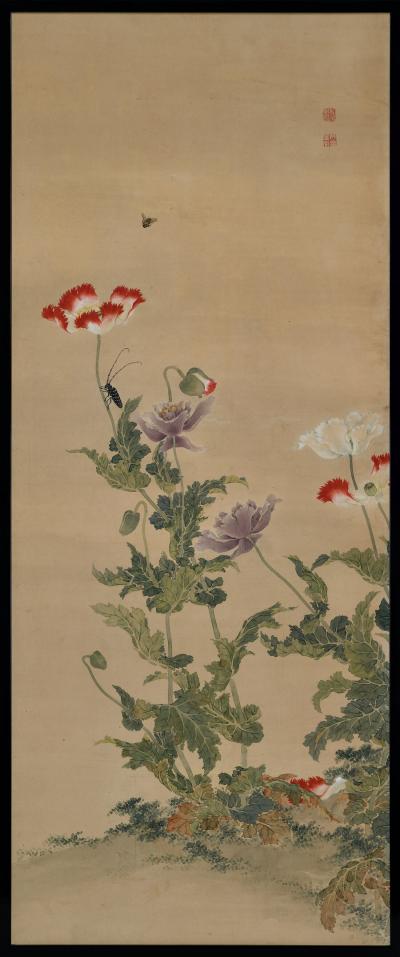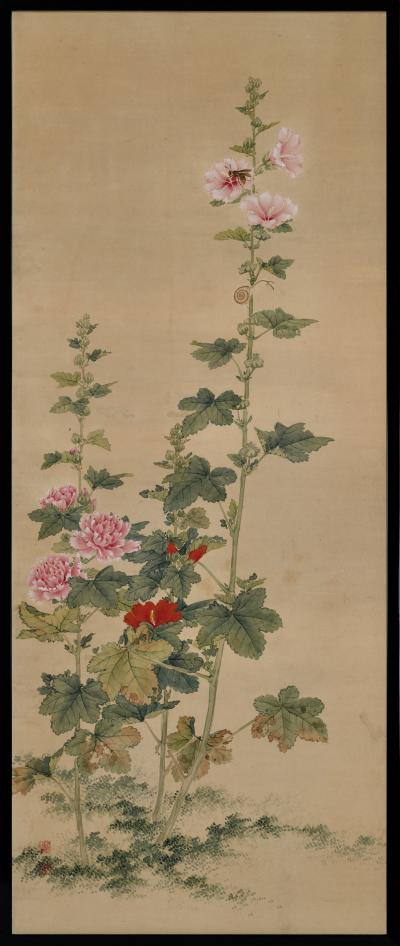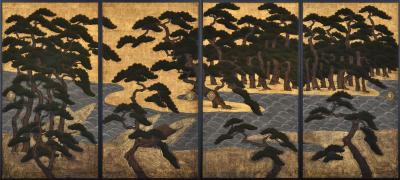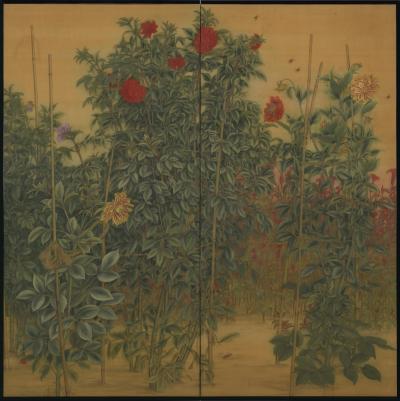Listings / Fine Art / Paintings / Figurative
Early 20th Century Japanese Screen. Cat & Mouse by Otaki Uzan.
-
Description
Otaki Uzan (1871-1939)
Cat & Mouse
A medium sized six-panel Japanese screen. Ink, color, gofun and gold on silk.
Dimensions: H. 137 cm x W. 273 cm (54” x 107.5”)
Price: USD 35,000
The narrative playfulness of the scene depicted on this Japanese screen sets alight what is at its core a celebration of a bountiful harvest. The screen offers a visual representation of the abundance of nature and the wish for ongoing prosperity. It is closely tied to the seasons and in this case spring, summer, autumn and winter are all represented. The plethora of freshly harvested vegetables includes new season ginger, Chinese wax gourd, butterbur, welsh onion, Japanese radish, sweet potato, lotus root, soy beans and aubergine. The artist has employed meticulous attention to detail in the depiction of the vegetables as well as the use of vibrant colors and an intricate composition to bring the scene to life, but ultimately the cat and mouse steal the show. It is a stunning example of capturing the lifelike qualities of a cat, portrayed with an intense focus on its movement and expression. Hidden amongst the aubergines is the protagonist of the scene; a small grey mouse. In pursuit, the cat has upended the basket of vegetables. We can still sense the aubergines rolling. The mouse’s body shape and tail mimic the aubergines and the cat has caught the wrong tail.
The screen has recently been completely remounted.
Otaki Uzan (1871-1939) studied painting with Entan Ichihara and Haizan Ishikawa. He later moved to Tokyo and studied under Amaya Kawamura. and was predominantly known for his landscape paintings. He was a decorated artist and served as a member of the Japan Art Association and as a councllior of the Japan Nanshu (Southern school of Chinese painting) Association. He was a regular national exhibitor and awarded artist. He exhibited at the Japan Painting Association in 1909, 1910, 1912 (honorable mention), 1913,1914 (commendation), 1915 (3rd prize and silver medal), 1916 (bronze medal), 1917 (bronze medal), 1918 (bronze medal), 1919 (bronze medal), 1923, 1924, 1926, 1928 and 1933. He was also selected to exhibit with the Bunten in 1915 and 1916. -
More Information
Period: 1900-1919 Condition: Good. Styles / Movements: Asian Art Incollect Reference #: 727725 -
Dimensions
W. 107.48 in; H. 53.94 in; W. 273 cm; H. 137 cm;
Message from Seller:
Kristan Hauge Japanese Art, based in Kyoto's museum district since 1999, specializes in important Japanese screens and paintings for collectors, decorators, and museums worldwide. Contact us at khauge@mx.bw.dream.jp or +81 75-751-5070 for exceptional access to Japanese art and history.













